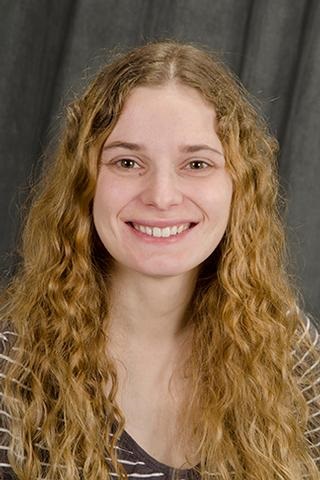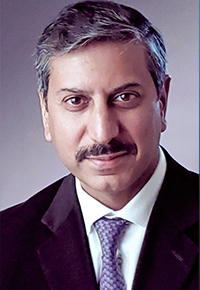ASGE Advanced Practice Provider Case of the Month
Sarah Enslin, PA-C, Victoria Howard, PA-C, Michael Colicchio, PA-C
Vivek Kaul, MD, FASGE
Division of Gastroenterology and Hepatology
University of Rochester Medical Center, Rochester, NY

Sarah Enslin, PA-C

Victoria Howard, PA-C

Michael Colicchio, PA-C

Vivek Kaul, MD, FASGE
Case 3
A 45-year-old Caucasian male presented to the ED with melena for 7 days. On further questioning, patient reported intermittent dyspepsia, nausea, early satiety and bloating for the prior 6 weeks. He had decreased his oral intake secondary to these symptoms and has had a 10-pound weight loss. He admits to dizziness. He denies fevers, chills, vomiting, hematemesis, jaundice.
He smokes ½ pack of cigarettes daily x 25 years. He stopped drinking alcohol approximately 2 weeks ago secondary to epigastric pain. He works in construction. He has been taking over-the-counter ibuprofen for the last 4 months secondary to shoulder pain. He does not take any prescription medications.
On physical examination, the patient is pale, tachycardic (heart rate 135 bpm), hypotensive (80/60 mmHg) and afebrile (T 36.5oC). Labs in the ED show hemoglobin of 6.5gm/dl. He receives IV fluid resuscitation and 2 units of packed red blood cell transfusion with improvement in his heart rate and blood pressure.
What is the next best step in the management of this patient?
A. Observation
B. Esophagogastroduodenoscopy (EGD)
C. CT scan
D. Abdominal x-ray
The correct answer is B. This patient’s presentation is most suggestive of a bleeding peptic ulcer (PUD), and EGD within 24 hours is indicated. Endoscopic therapy in this setting is highly effective and can help prevent further morbidity and mortality.
Practice Pearls
Approximately 70% of peptic ulcers are asymptomatic. However, patients may also present with clinically significant, acute life-threatening complications such as GI hemorrhage and perforation.
Symptomatic patients often complain of epigastric abdominal pain. The timing of pain is often related to the location of the ulcer(s). Pain from gastric ulcers may worsen with meals. Pain from duodenal ulcers may be alleviated by eating and is most pronounced in between meals and at night. Pyrosis and regurgitation may also be present in ~ 50% of patients with PUD. Some patients will also complain of early satiety and nausea, particularly if there is associated pyloric stenosis or gastric outlet obstruction. Weight loss, as seen in our patient, may be associated with decreased oral intake.
Perforated PUD often presents as a classic triad of sudden onset abdominal pain, tachycardia and abdominal rigidity/peritonism.
Imaging can be helpful in diagnosing advanced peptic ulcer disease, but sensitivity is low for uncomplicated/superficial ulcers. If clinicians suspect PUD, endoscopy is often necessary for diagnosis, particularly in the setting of risk factors (NSAID and/or corticosteroid use, history of Helicobacter pylori infection, tobacco use). Endoscopic biopsy of an ulcer should be performed if there are any malignant features present (ulcerated mass, nodularity, irregular thickened ulcer margins) to rule out underlying malignancy.
Patients with clinically significant, acute upper GI bleed (as in the patient above) should undergo endoscopy within 24 hours of presentation. Endoscopic therapy should be performed for ulcers with active bleeding, active oozing and visible vessels. Bleeding peptic ulcer disease can generally be managed endoscopically with the use of epinephrine injection, bipolar cautery, argon plasma coagulation, hemostatic clips and/or hemostatic spray application.
Medical treatment of PUD includes acid suppression with proton pump inhibitor. This should be continued for at least 4 weeks for duodenal ulcers and at least 8 weeks for gastric ulcers. Repeat endoscopy to check ulcer healing is recommended for gastric ulcers. If the ulcer is persistent on repeat endoscopy or if patient has a history of recurrent PUD and/or need for long-term ASA/NSAID use, then maintenance PPI therapy is indicated.
Patients should be treated for H. pylori (if present) with any of the approved regimens and post-treatment eradication confirmed with either a stool antigen or breath test.
Repeat EGD is rarely indicated for duodenal ulcers unless they have persistent/recurrent symptoms after discontinuation of PPI or if there is concern for an alternate etiology (lymphoma, cancer, etc.) on index endoscopy. Repeat EGD should be performed in patients with evidence of ongoing GI bleeding, ulcers with features of malignancy, large gastric ulcers and risk factors for foregut malignancy.
References
- ASGE Standards of Practice Committee, Banerjee S, Cash BD, Dominitz JA, et al. The role of endoscopy in the management of patients with peptic ulcer disease. Gastrointest Endosc. 2010 Apr;71(4):663-8
- Kamada T, Satoh K, Itoh T, et al. Evidence-based clinical practice guidelines for peptic ulcer disease 2020. J Gastroenterol. 2021;56(4):303-322
- Shah SC, Iyer PG, Moss SF. AGA Clinical Practice Update on the Management of Refractory Helicobacter pylori Infection: Expert Review. Gastroenterology. 2021 Apr;160(5):1831-1841
- Laine L, Barkun AN, Saltzman JR, Martel M, Leontiadis GI. ACG Clinical Guideline: Upper Gastrointestinal and Ulcer Bleeding. Am J Gastroenterol. 2021 May 1;116(5):899-917
Sarah Enslin, RPA, is a physician assistant at the University of Rochester Medical Center in Rochester, NY. Sarah serves on several national GI committees and is a member of the ASGE Practice Operations Committee. Victoria Howard, PA-C, is co-lead advanced practice provider for the division of gastroenterology and hepatology at University of Rochester Medical Center, Rochester, NY. Michael Colicchio, PA-C, is a physician assistant for the division of gastroenterology and hepatology at the University of Rochester Medical Center, with special interest in motility and interventional endoscopy. Vivek Kaul, MD, FASGE, is the Segal-Watson professor of medicine (and former division chief) in the gastroenterology and hepatology division at the University of Rochester Medical Center and serves as the chair of the ASGE Reimbursement Committee.